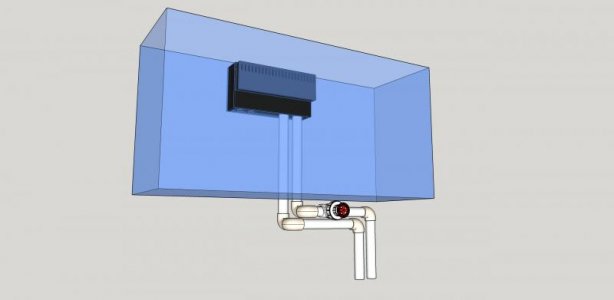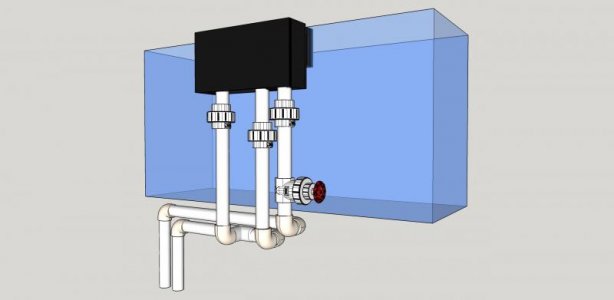jacksonpt
New member
This weekend I'm hoping to bite the bullet and finally swap out my old open channel drains with glass holes overflow boxes to a herbie style setup using an eshopps box with 2 drain lines.
But I want to make sure I know everything I should know, and plan my drain line plumbing correctly... something I didn't do in the past with my current drains.
With a herbie drain system, one drain line runs at full siphon, taking as much flow as possible. If properly tuned/balanced, the second drain line should see just the slightest of trickles of water, correct? So the pipe for the siphon line should be low enough in the overflow box to prevent it from sucking in air. The pipe for the open channel will determine water level in the overflow box, so it should be high enough to prevent needless cascading/waterfall effect as water flows into the box, correct?
What about on the exit/sump side of the drain lines? Any guidelines for how the siphon drain should terminate (water depth, plumbing fittings, pipe angles, whatever else)? Any guidelines for what to do or not to do with the open channel pipe?
TIA.
But I want to make sure I know everything I should know, and plan my drain line plumbing correctly... something I didn't do in the past with my current drains.
With a herbie drain system, one drain line runs at full siphon, taking as much flow as possible. If properly tuned/balanced, the second drain line should see just the slightest of trickles of water, correct? So the pipe for the siphon line should be low enough in the overflow box to prevent it from sucking in air. The pipe for the open channel will determine water level in the overflow box, so it should be high enough to prevent needless cascading/waterfall effect as water flows into the box, correct?
What about on the exit/sump side of the drain lines? Any guidelines for how the siphon drain should terminate (water depth, plumbing fittings, pipe angles, whatever else)? Any guidelines for what to do or not to do with the open channel pipe?
TIA.


